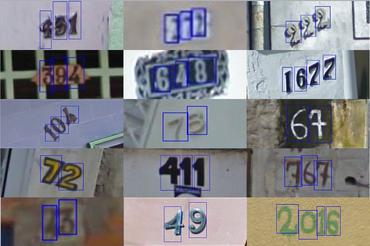Optical Character Recognition (OCR)
311 papers with code • 5 benchmarks • 42 datasets
Optical Character Recognition or Optical Character Reader (OCR) is the electronic or mechanical conversion of images of typed, handwritten or printed text into machine-encoded text, whether from a scanned document, a photo of a document, a scene-photo (for example the text on signs and billboards in a landscape photo, license plates in cars...) or from subtitle text superimposed on an image (for example: from a television broadcast)
Libraries
Use these libraries to find Optical Character Recognition (OCR) models and implementationsSubtasks
Most implemented papers
An End-to-End Trainable Neural Network for Image-based Sequence Recognition and Its Application to Scene Text Recognition
In this paper, we investigate the problem of scene text recognition, which is among the most important and challenging tasks in image-based sequence recognition.
EAST: An Efficient and Accurate Scene Text Detector
Previous approaches for scene text detection have already achieved promising performances across various benchmarks.
Shape Robust Text Detection with Progressive Scale Expansion Network
Due to the fact that there are large geometrical margins among the minimal scale kernels, our method is effective to split the close text instances, making it easier to use segmentation-based methods to detect arbitrary-shaped text instances.
Real-time Scene Text Detection with Differentiable Binarization
Recently, segmentation-based methods are quite popular in scene text detection, as the segmentation results can more accurately describe scene text of various shapes such as curve text.
Image-to-Markup Generation with Coarse-to-Fine Attention
We present a neural encoder-decoder model to convert images into presentational markup based on a scalable coarse-to-fine attention mechanism.
PP-OCR: A Practical Ultra Lightweight OCR System
Meanwhile, several pre-trained models for the Chinese and English recognition are released, including a text detector (97K images are used), a direction classifier (600K images are used) as well as a text recognizer (17. 9M images are used).
Show, Attend and Read: A Simple and Strong Baseline for Irregular Text Recognition
Recognizing irregular text in natural scene images is challenging due to the large variance in text appearance, such as curvature, orientation and distortion.
A Multi-Object Rectified Attention Network for Scene Text Recognition
It decreases the difficulty of recognition and enables the attention-based sequence recognition network to more easily read irregular text.
Image-based table recognition: data, model, and evaluation
In addition, we propose a new Tree-Edit-Distance-based Similarity (TEDS) metric for table recognition, which more appropriately captures multi-hop cell misalignment and OCR errors than the pre-established metric.
Robust Scene Text Recognition with Automatic Rectification
We show that the model is able to recognize several types of irregular text, including perspective text and curved text.






 IAM
IAM
 FUNSD
FUNSD
 ST-VQA
ST-VQA
 TextCaps
TextCaps
 ICDAR 2003
ICDAR 2003
 TextOCR
TextOCR
 UFPR-ALPR
UFPR-ALPR
 im2latex-100k
im2latex-100k



